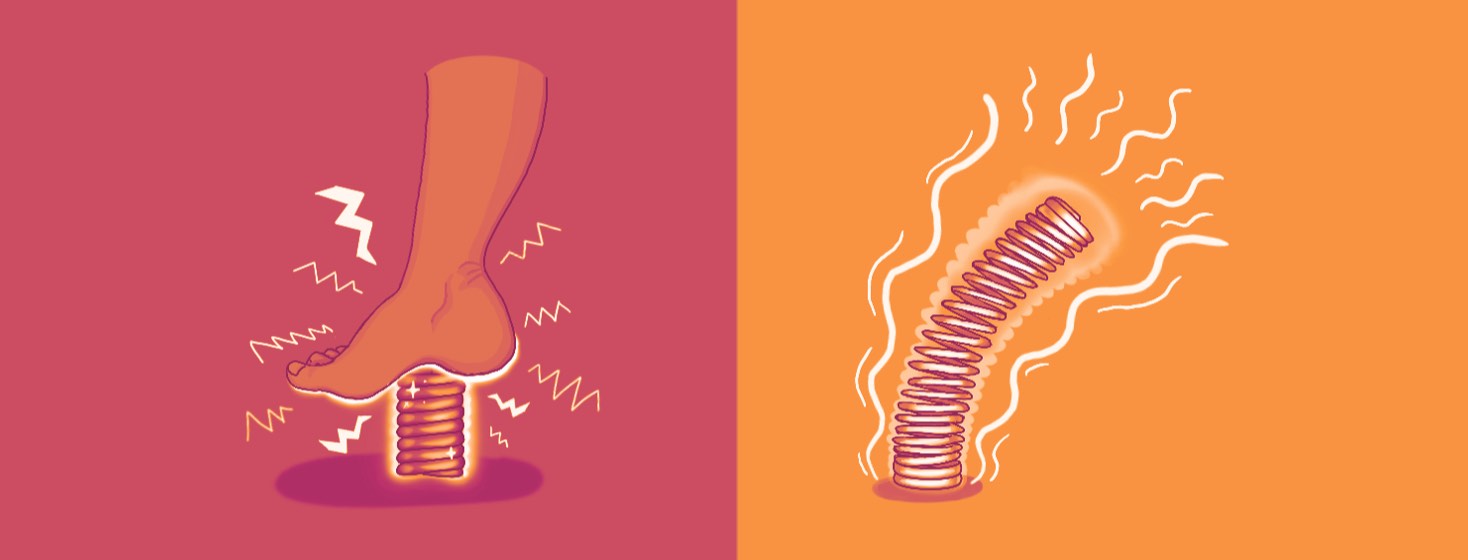Are RLS Movements Voluntary or Involuntary?
I have had restless legs syndrome (RLS) my entire life. That’s coming up on 56 years now — quite a long time to be wriggling and jiggling.
For much of my life, I have had people tell me to stop moving, and you know what? It’s jolly hard.
I also have periodic limb movement disorder (PLMD), which generally only affects me while I sleep. The movements with PLMD are completely involuntary. I have woken myself up with leg jerking. I have most definitely woken my husband up – so much so he occasionally suggests I might be more comfortable in the spare bed. And very occasionally, I will have PLMD movements during the day – usually when I’m at rest and my arm or leg just flies out in a big twitch. I get quite a surprise.
But are RLS movements voluntary? I find it is a difficult thing to answer.
What my RLS feels like
For me, the sensations of RLS are like a swarm of beetles cascading down my leg – from my lower back down to my ankles. There is a deep ache associated with the moving sensations. When I move my legs, the ache is eased. It doesn’t go away, but it is less distressing.
During the day, when I’m seated – like now, while I’m typing – I just jiggle like a well-dangled teabag. There’s nobody here to bother. If I try and sit still, the sensations build and build until they’re at bursting point and the desire to move my legs and release the tension is overwhelming. It’s like a spring under tension – it just can’t stay there for too long.
I can start and stop RLS movements
But I can stop the movements. It’s uncomfortable and I can’t stop them indefinitely, but I can stop. Therefore, I consider the movements to be voluntary. I make the decision as to when I can stop and start. If nobody is around to be disturbed, I can jiggle continuously (like now). If there are people nearby who are impacted by my movements, I can stop for short periods of time then engage in much more subtle movements, like pelvic floor exercises or slow stretches.
Involuntary movements and diseases
There are diseases – some of them quite significant – that are characterised by involuntary movements or impairment of voluntary movements. And there are times when I’ve been asked if I have those diseases.
Huntington’s disease, Parkinson’s disease, attention-deficit/hyperactivity disorder, Sydenham’s Chorea, rheumatic rever. I’m sure there are many more.1-5
If you’re ever concerned about what type of movements you are experiencing, the Mayo Clinic has excellent descriptions of the signs and symptoms of most diseases, including restless legs syndrome.6
Tremor is not the same as restlessness
It is also worth noting that a tremor is different from restlessness. Many of the diseases listed above may cause a tremor. Many medications can have side effects that include tremors. There is also a condition called an essential tremor that has no other symptoms aside from a tremor.7
I have experienced tremors related to medication side effects (lithium). And there is a strong genetic history of essential tremor in my family. I seem to be in the early stages of developing a mild shake.
Tremor is involuntary
But a tremor is not the same as RLS. It feels completely different. It is not voluntary and it cannot be stopped. My RLS movements are intensely uncomfortable, but I can exert control and stop them when necessary. I feel that being able to distinguish between voluntary and involuntary movements is important and should be discussed with your doctor as there are many associated conditions.
RLS and tremor are a part of my life
While there are times when RLS has driven me to the brink of insanity, I am conscious of the fact that it is not a fatal disease. It worsens over time, but it won’t kill me. Same for the essential tremor.
I find that most of the time, I barely notice my restlessness and tremor. They are just a part of my life. It is when I have to try and exert a modicum of control over the moments that it becomes clear exactly what I can and cannot control. I am grateful that with RLS, there is at least a modicum of control.

Join the conversation